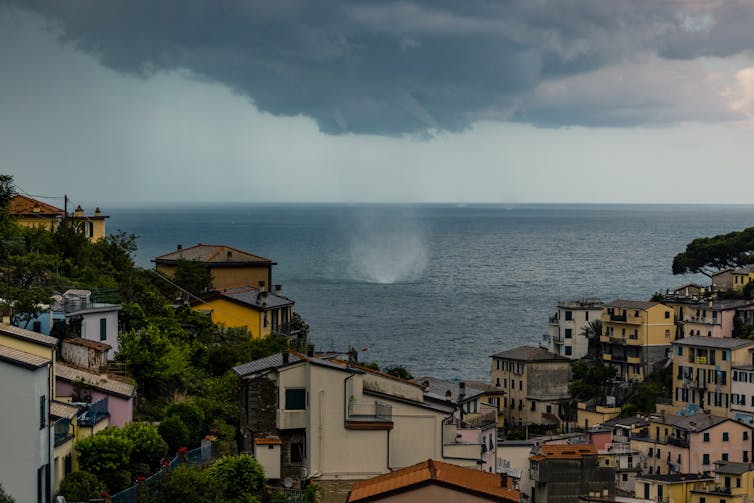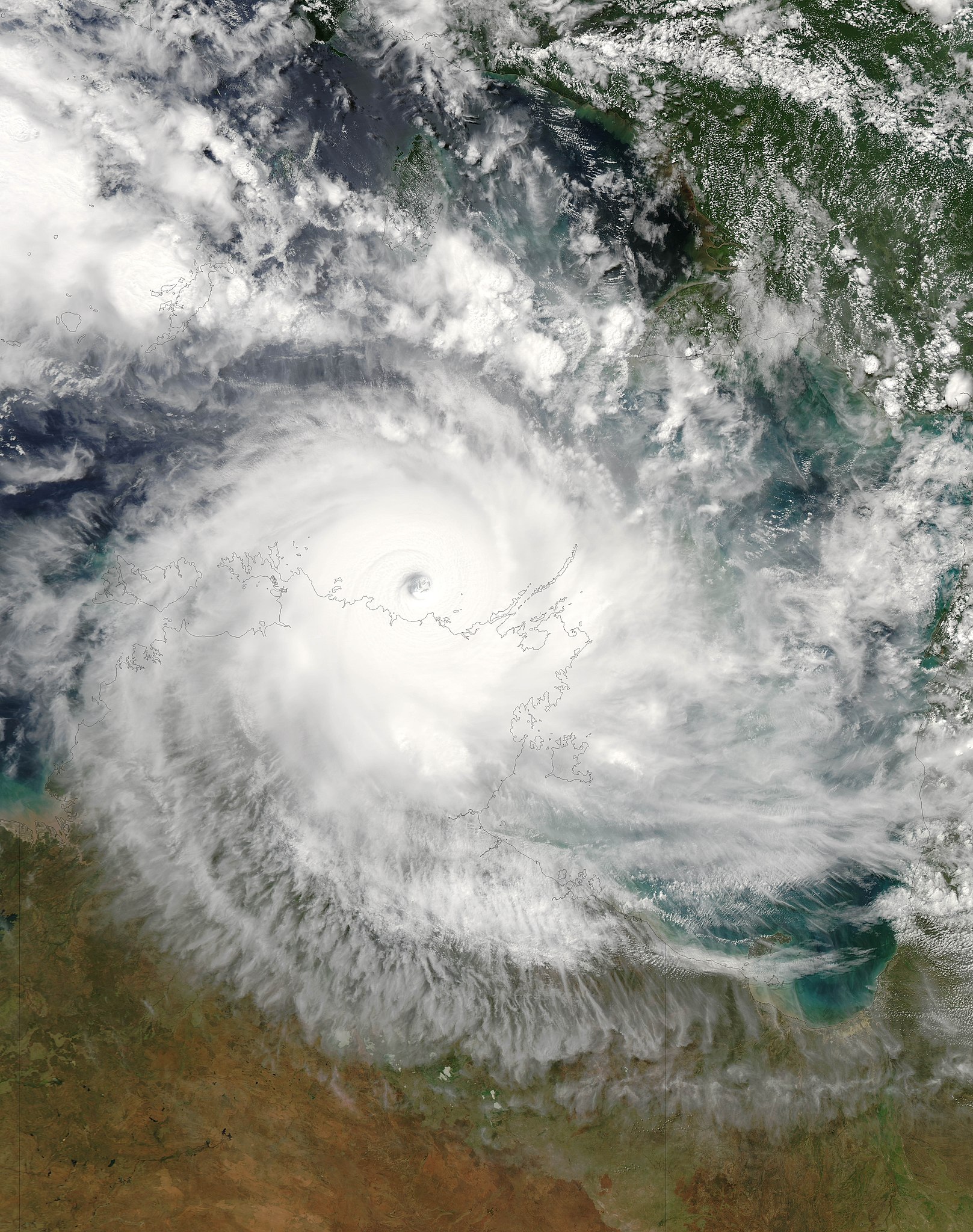
Unusually warm waters off the coast of Sicily helped spawn a “waterspout” that sank a superyacht earlier this week, leaving several people dead or missing.
Tornadoes are among nature’s most terrifying spectacles. These rotating columns of air are called tornadoes when they form over land and waterspouts when they form over water, though there are subtle differences which we’ll get into. While meteorologists have announced with some confidence some of the probable weather effects of climate change, tornadoes remain rather more mysterious.
But, it’s a question that people who live in tornado-prone regions cannot afford to ignore: will a hotter atmosphere breed more frequent and deadly twisters?

This roundup of The Conversation’s climate coverage comes from our award-winning weekly climate action newsletter. Every Wednesday, The Conversation’s environment editor writes Imagine, a short email that goes a little deeper into just one climate issue. Join the 35,000+ readers who’ve subscribed.
Astrid Werkmeister is an atmospheric physicist at Strathclyde University. She uses satellite imagery to monitor threats to offshore wind farms, and waterspouts are among the most serious.
“Safety protocols require workers to evacuate or seek shelter well before a waterspout approaches,” she says. “But if caught off guard, the situation can be life-threatening.”
‘Waterspout way’
There are two kinds of waterspouts. Tornadic waterspouts spawn from thunderstorms, and are essentially the same as tornadoes on land, except they form on (or move onto) water. This is what struck and capsized the Bayesian yacht.
Fair-weather waterspouts, meanwhile, are more common and less dangerous, and can form in relatively calm conditions when the wind doesn’t vary in speed and direction at different heights in the atmosphere.
A study that analysed this more gentle type of waterspout off the Balaeric Islands noted that most tended to form between 08:00 and 10:00 in the morning, when the rising sun warms the chilly sea air and causes it to rise.
Southern Italy has endured successive heatwaves this summer. Sea surface temperatures around Sicily on the day the Bayesian yacht sunk were reported to have been near 30°C, three degrees higher than average for the time of year. Warm ocean water is rocket fuel for storms that generate tornadic waterspouts, Werkmeister says.

And if “tornado alley” is a central band of the US running from the Dakotas in the north to Texas in the south, the southern Mediterranean has a claim to Europe’s “waterspout way”. Werkmeister notes that the Florida Keys and the Gulf of Mexico are also hotspots for waterspouts.
“Especially during late summer and early autumn when sea surface temperatures peak, the Mediterranean is known for frequent waterspouts due to its warm waters and dynamic atmospheric conditions,” she says.
The burning of fossil fuels in power plants, jet engines, cars and boilers has trapped more heat in Earth’s atmosphere, but it has also warmed the ocean. Rising sea surface temperatures mean more energy and moisture in the air, and so, broadly speaking, more waterspouts according to Werkemister.
Bogdan Antonescu, a tornado expert at the University of Bucharest, agrees.
“Currently, there is a marine heatwave [in the Mediterranean],” he says, via email.
“These marine heatwaves are becoming more common … With a high sea-surface temperature (as in the case of a heatwave), there is more energy for storms and probably a longer storm season.”
Over the rainbow?
The US averages 1,200 tornadoes a year, which is significantly more than any other country (the next closest is Canada, which records an average of 100 a year). One of the worst tornado outbreaks in US history occurred fairly recently – and well outside the season they are usually expected, which is early spring to late summer.
On the night of December 10 2021, multiple tornadoes tore through states as far-flung as Illinois and Arkansas and killed more than 70 people. This mid-winter spree prompted many people to worry that climate change will make tornadoes more common. Computer models for studying climate change have no clear answer.
“With climate models, the smaller the object, the harder it is to see,” says John Allen, an associate professor of meteorology at Central Michigan University.
“Tornadoes and the severe storms that create them are far below the typical scale that climate models can predict.”
What models can foresee are conditions that create tornadoes, Allen says. These include warm, moist air, changeable winds and a trigger, like a cold front, to ignite the storm. Without this final ingredient, climate models may predict perfect tornado weather that still fails to generate any actual tornadoes.
Climate models generally indicate more favourable conditions for US tornadoes towards the end of the century, largely because of rising temperatures and moisture that will generate updrafts of air. The likelihood of tornadoes in autumn and winter will increase while falling in the traditional spring and summer season, Allen says.
Another quirk is that the area where most tornadoes strike in the US appears to be shifting east – away from the sparsely populated plains of say, Oklahoma, and towards more densely inhabited suburbs and cities in Alabama.
And so, even without favourable conditions aligning more often, tornadoes could still claim more lives in future. Thankfully, people seem to be getting better at preparing for them says Ernest Agee, a professor emeritus of atmospheric science at Purdue University.
“The per capita death toll from tornadoes has actually gone down in the latter half of the past 100 years,” he says.
“So, as bad as these new outbreaks are, science and technology are saving lives at a faster rate than storms are killing people.”
Jack Marley, Environment + Energy Editor, The Conversation
This article is republished from The Conversation under a Creative Commons license. Read the original article.











